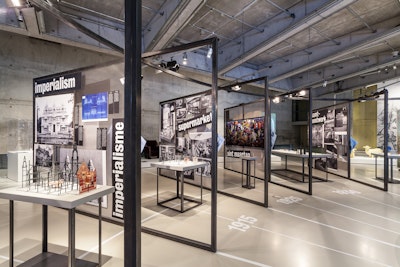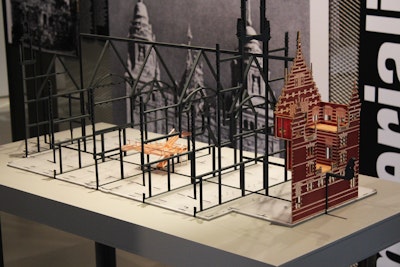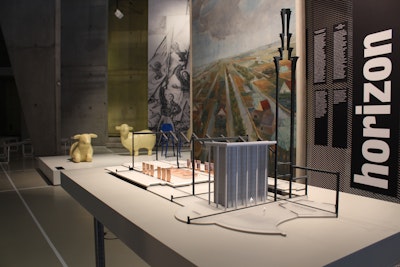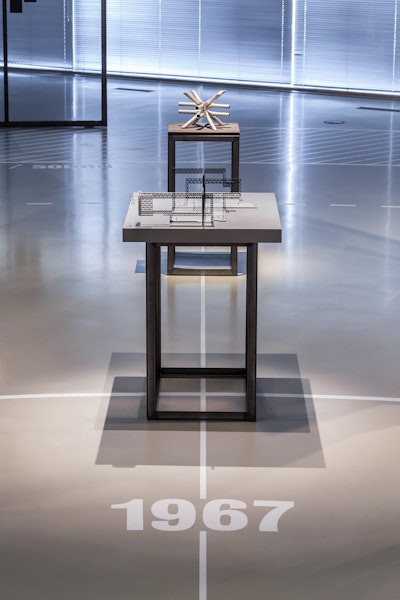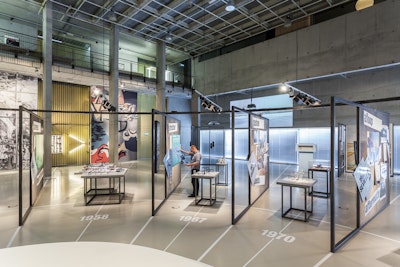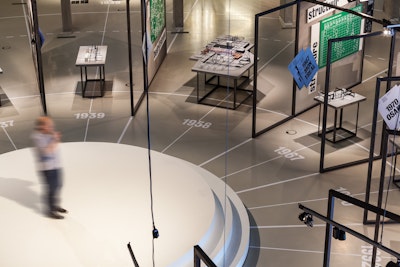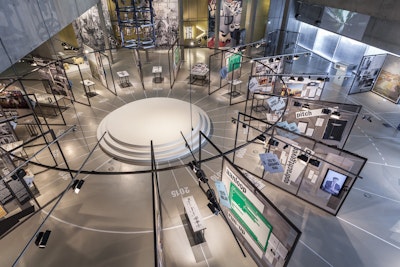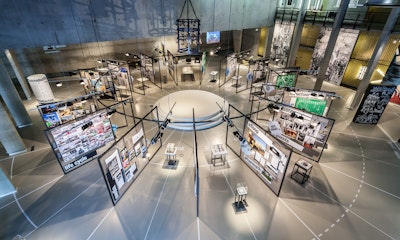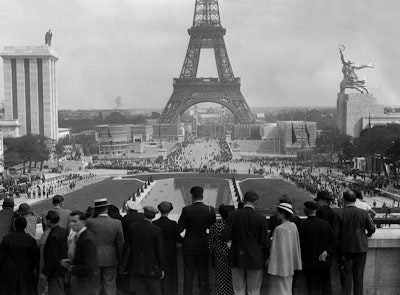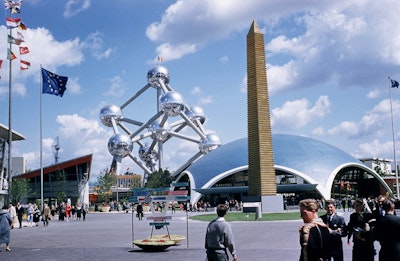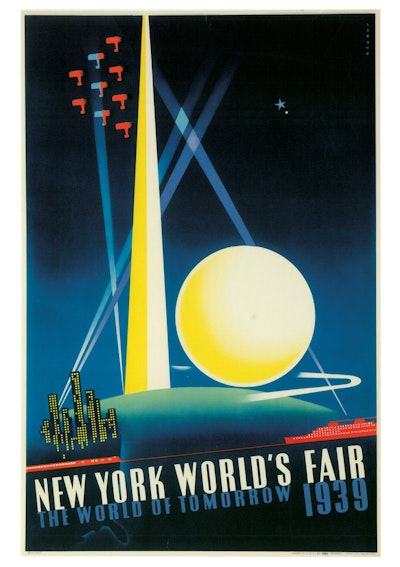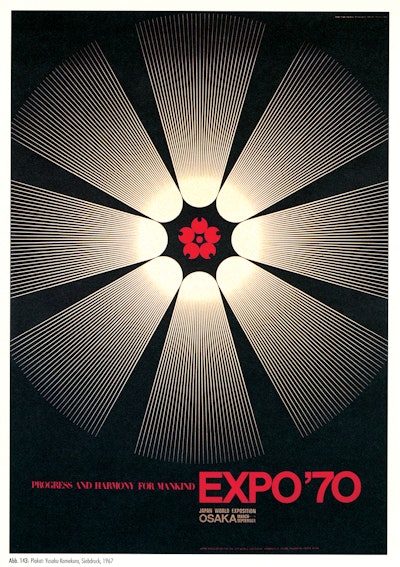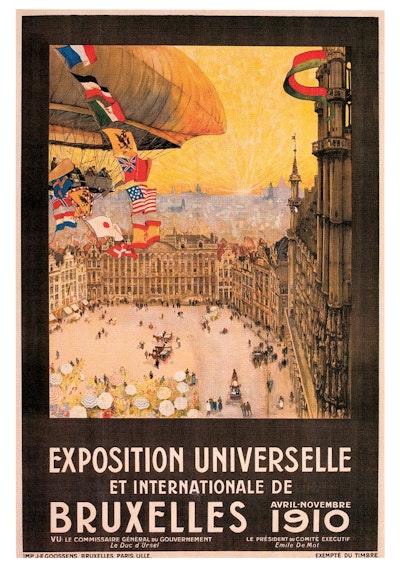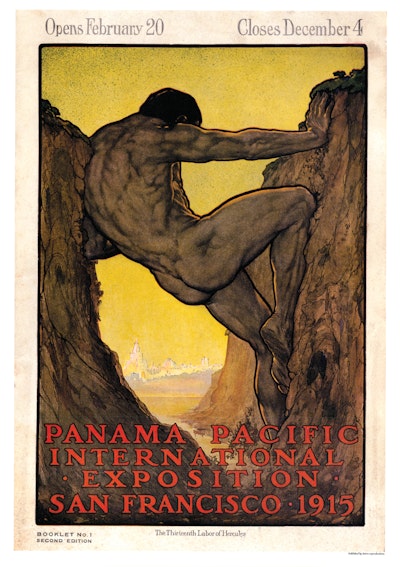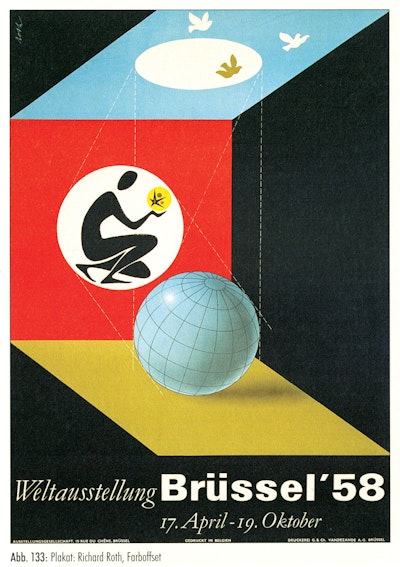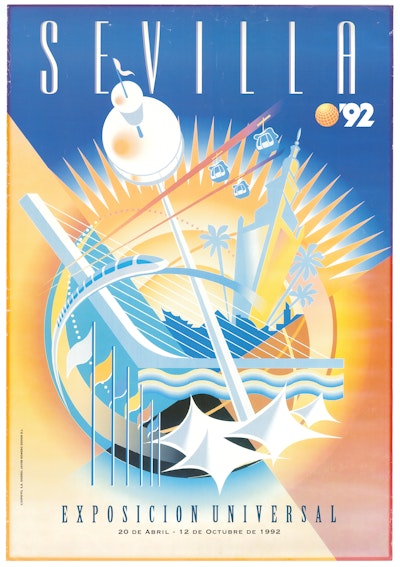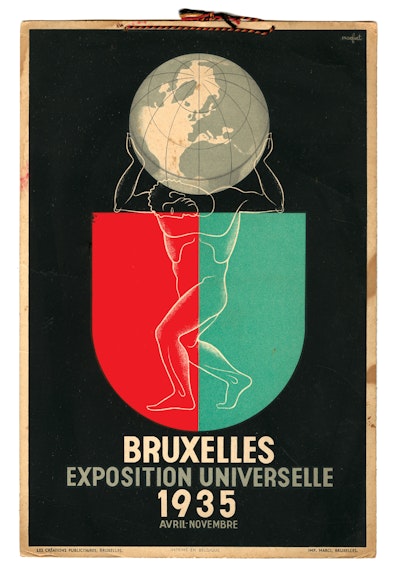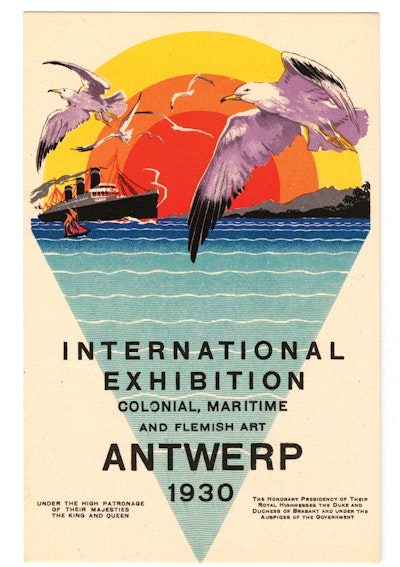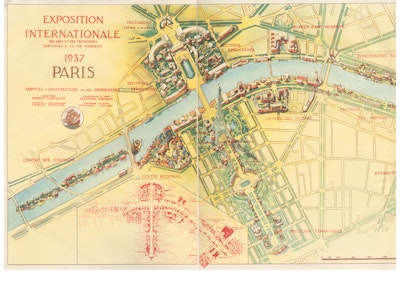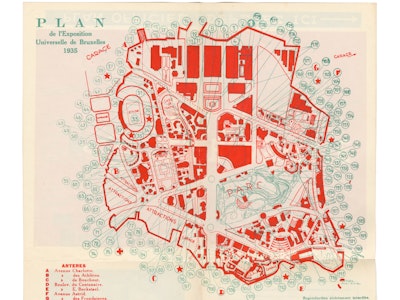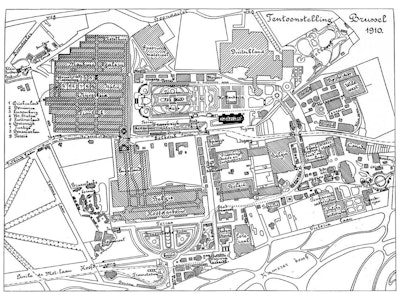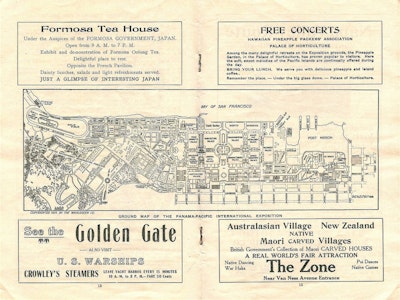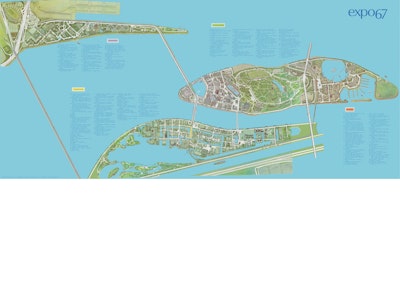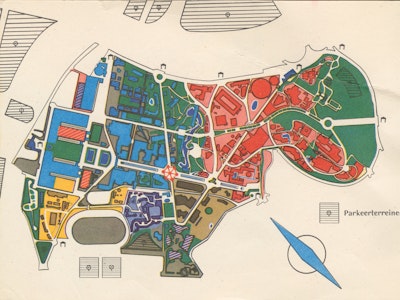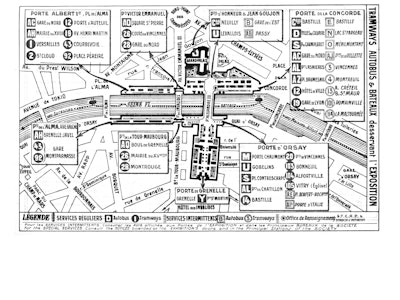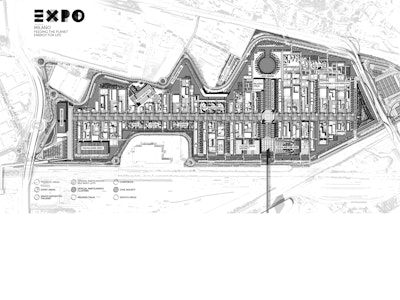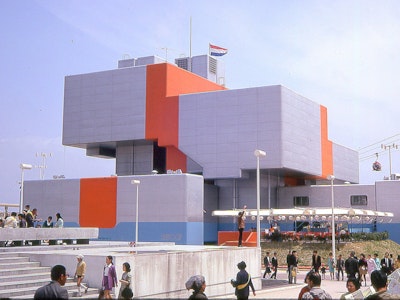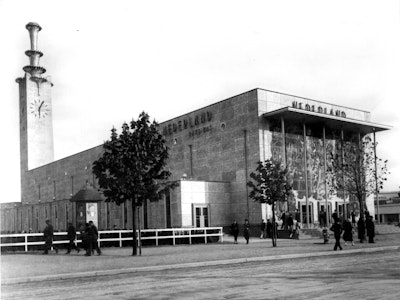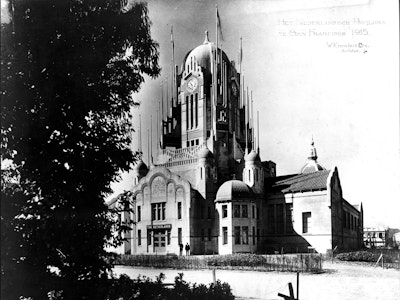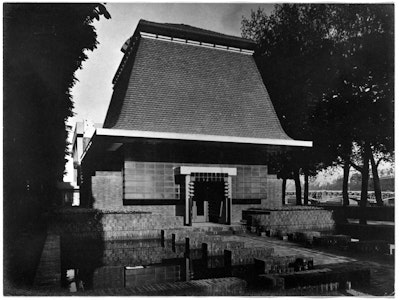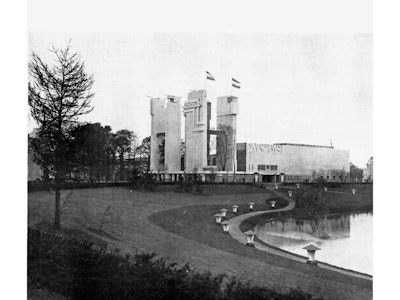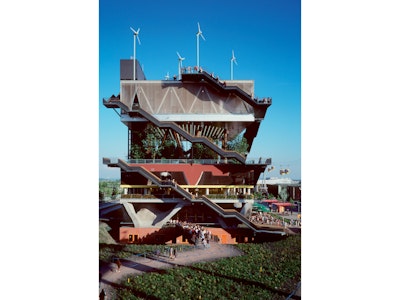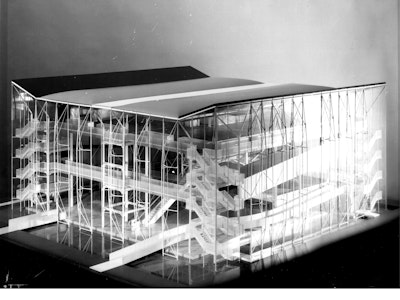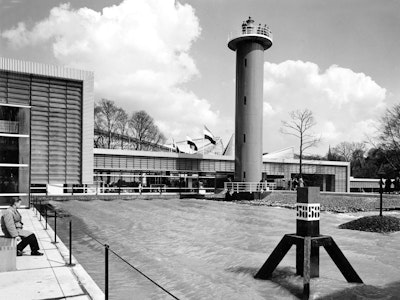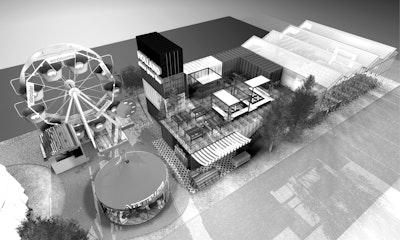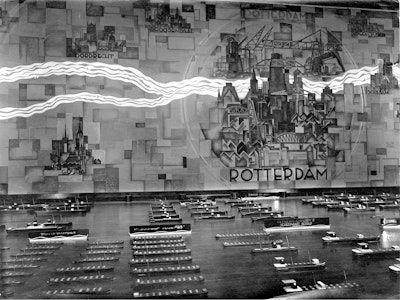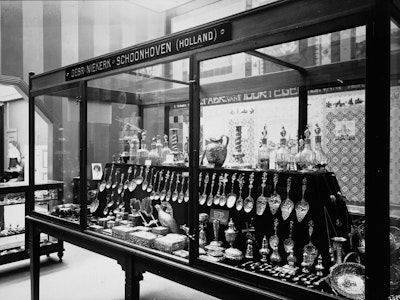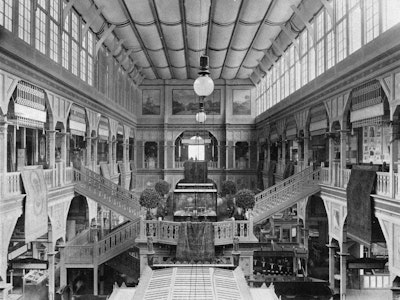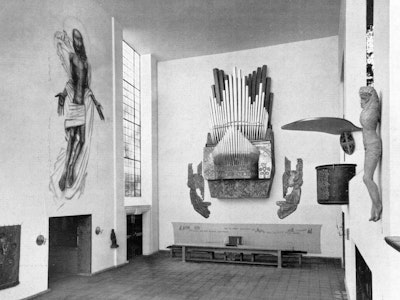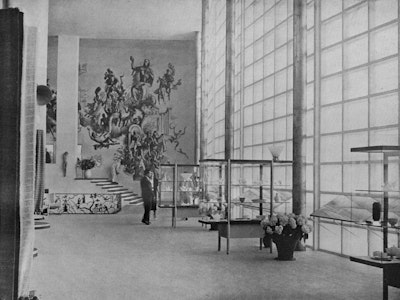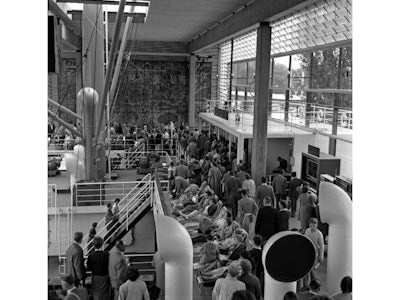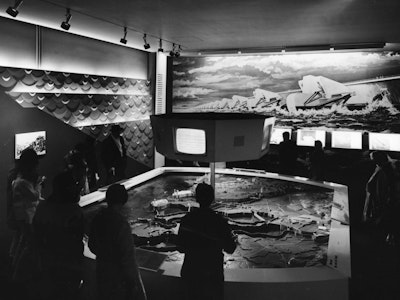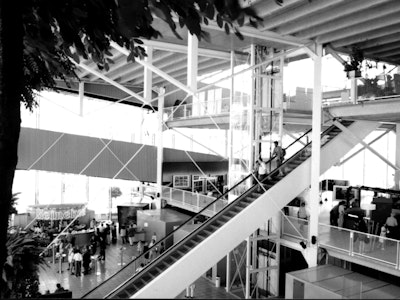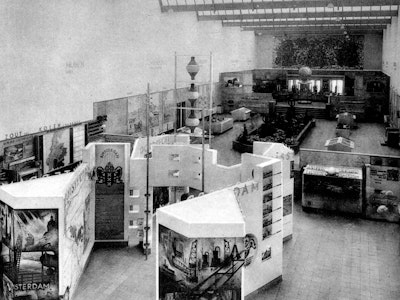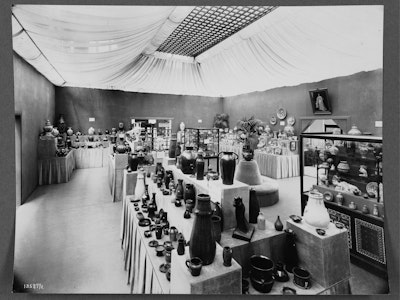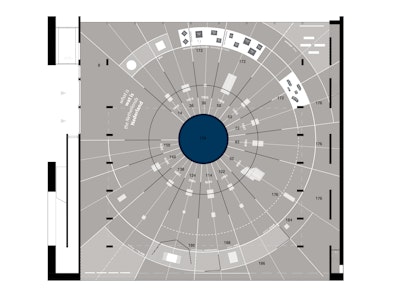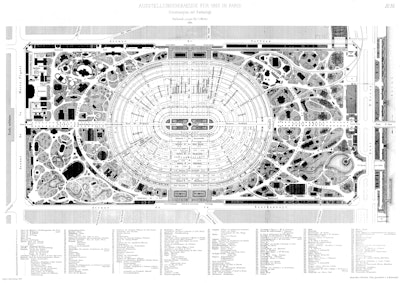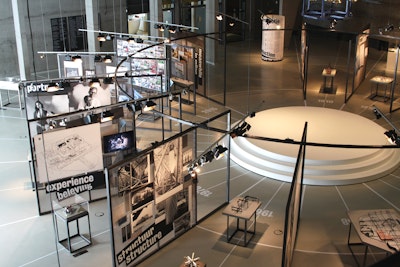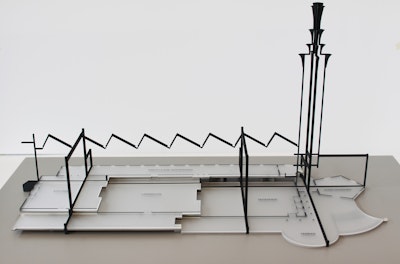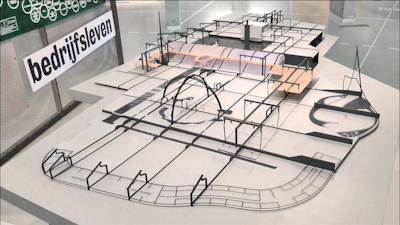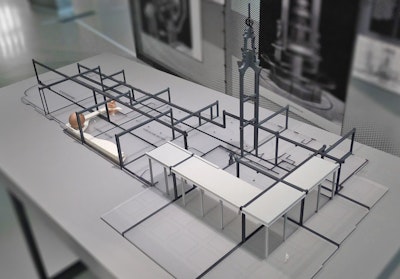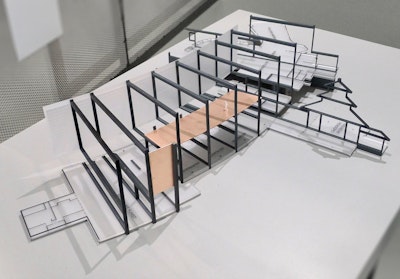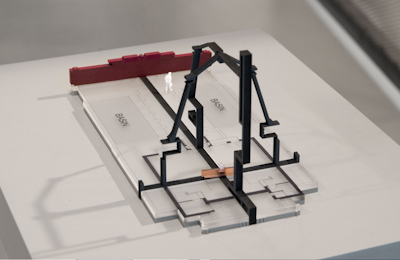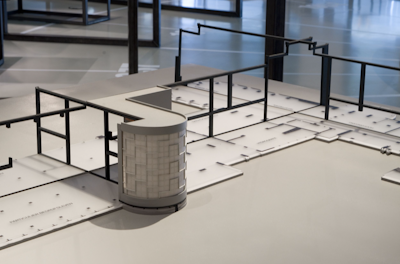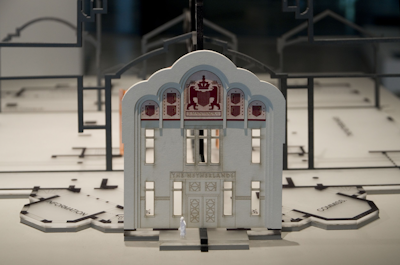A portrait of 14 Dutch contributions to the World Expo.
What is The Netherlands
AMO for Het Nieuwe Instituut
Location: Het Nieuwe Instituut, Rotterdam
Client: Het Nieuwe Instituut
Year: 2015
Program: Research / Exhibition Design
Status: Completed
Curator and exhibition design: Stephan Petermann and Marieke van den heuvel (Mann Office)
Graphic Design: The Exercises (Lu Liang)
Photos by: Studio Mann, Cédric Van Parys, Klaas Vermaas.
© OMA/AMO
Introduction
Introduction
In the context of the 34th World Expo opening in Milan in spring 2015, Het Nieuwe Instituut addresses this phenomenon from different perspectives. The exhibition What is the Netherlands shows how the Dutch entries to the World Expo have always been the result of collaborations between government, industry, designers and artists.
What is a world expo ?
The World Expo is the oldest global platform for innovation. Nation states and corporations collectively present themselves to the public at large. It is a place where the latest technological progress, ideal national characteristics, idea histories, and hopeful futures are shown. It is an event recognized by the French International Exhibitions Bureau (BIE), the controlling body, officially since 1926, with two important requirements – the exhibition should be hosted within a confined area and has to be progressive. At the start of the 20th century World Expos are hosted almost yearly throughout the western world. Nowadays there’s one every five years. The last one is held in Milan in 2015. In 2020 it will be in Dubai. For 2025 Rotterdam has applied to be a candidate city; so has London, Paris, Teheran and Toronto.
What is there to see ?
In contrast to other large global events like the FIFA World Cup or the Olympic Games, World Expos do not have a very clear format. Everything is possible, from trade fair to theme park. It’s up to the participants and the host cities. It means that the World Expo is always speculative, looking at what to desire. The national pavilions and corporate presentations function as a global barometer indicating prospective futures. A number of key countries have by and large been present at every World Expo since the beginning, like France, Great Britain, Belgium, Italy and the Netherlands. In recent editions, most countries in the world participate – down to the tiniest Pacific island.
Are expos now irrelevant ?
Even in the earliest edition (London, 1851) doubts existed about the timeliness of the idea of a World Expo. Into the 21st century, despite increased global travel making the world more accessible and therefore less exotic, and apparently reducing the need for such a stylized showcase, expos have been able to adapt to the changing expectations of the public, thanks to the flexibility of their initial premise. Anachronistic or not, it remains possible, at a World Expo, to present your country or company to around 196 other countries and millions of visitors – and translate abstract policy into concrete form, to experiment with what the future can be. As such World Expos are timeless.
What is The Netherlands
What is The Netherlands
This exhibition is a portrait of 14 select Dutch contributions to World Expos since 1910. Every contribution is a glance in the mirror, showing where the Netherlands was at a particular point in history, where they want to be, and how this reality and this desire can be displayed at a particular point in history. Documentation and remnants of the exhibitions are collected here for the first time and present a dialogue between modernity and nationality, economy and image, corporate opportunism and collective ambitions. Sometimes exotic, sometimes packed with enormous quantities of stuff, sometimes boring and empty. Sometimes small and introverted, courageous and convinced, timid and modest, experimental and funny, but always Dutch.
Exhibition Design
Exhibition Design
The exhibition layout stems from the circular masterplan of one of the first world fairs (Paris 1867). Each country was assigned a piece of the “cake”. In this exhibition the masterplan divides the space into 14 times The Netherlands. Each piece representing the country at a certain time in history.
Scale Models
Scale Models
A strategy was developed to represent the architecture, content and identity of each pavilion in the exhibition. Using the archives of Het Nieuwe Instituut we developed a system to use the 2D plans and sections to create 3D models, providing the first concise survey of the Netherlands’ contributions to the World Expos since 1910. All the models have been built to the same scale, allowing for comparative analysis.
The general curatorial aim of the exhibition is to give an impression of the Dutch pavilions through a combination of fragments. Therefore the models are also an abstraction of the actual building, showcasing only the most relevant information. On each model, a fragment of the facade gives an impression of the architectural preferences in that time. Based on photographs of the pavilions and descriptions in architecture magazines, copper components were added to represent details of the interiors of the pavilions.
Gallery
